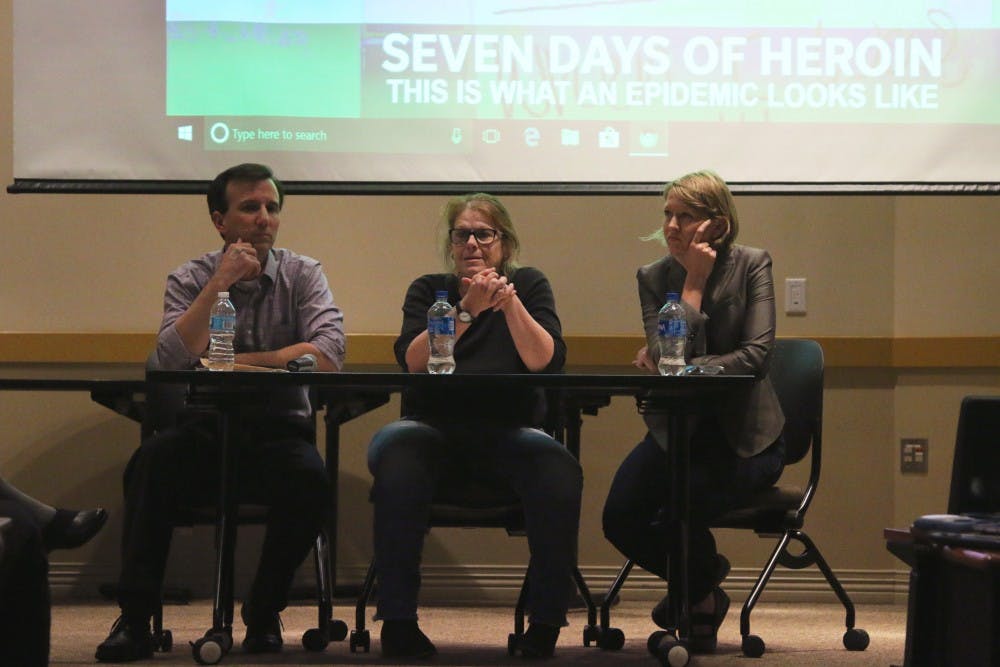Three journalists from The Cincinnati Enquirer, situated amid the worst of the heroin epidemic, spoke in McGuffey Hall last week.
Dan Horn, Carrie Cochran and Amy Wilson, spoke on Thursday, Nov. 9 to discuss "Seven Days of Heroin," an article published in September that chronicled the lives of several heroin addicts and their loved ones throughout a single week.
The inspiration behind the article came about two years prior when Horn was on assignment in a jail and saw a woman in the booking area.
She displayed distinct behaviors of a heroin addict, such as nodding her head up and down.
The woman was set to get out in a couple of hours, and when Horn asked her what she would do upon release, she replied, "I'm gonna get high."
This incident sparked the idea for their article as well as the 30-minute documentary produced in conjunction to the story.
Scenes from this documentary, "Seven Days of Heroin, This is What an Epidemic Looks Like," played behind the writers as they spoke, showing images of people overdosing, treatment centers and family members discovering their loved ones had died.
The Enquirer covered the heroin epidemic in Cincinnati, Middletown, West Chester, Norwood and Hamilton, Ohio and Covington, Kentucky.
Journalists at the Enquirer spent a week following the day-by-day habits of drug addicts, law enforcement, family members and survivors in order to present an hourly breakdown of how the heroin epidemic affects the daily lives of people in these cities.
The article was viewed over one million times during its first week, and received praise from senators Rob Portman, Sherrod Brown, and Huffington Post founder Arianna Huffington.
Huffington tweeted: "Amazing and moving piece by the Cincinnati @Enquirer on the heroin epidemic. Great example of the value of local press."
The story required a significant amount of planning before reporters were sent out to cover the epidemic.
Enjoy what you're reading?
Signup for our newsletter
At one point during the lecture, Cochran presented the audience with a Google Sheet containing an hourly schedule of the Enquirer's reporting.
"We staffed ride-alongs every day of the week to try to catch something," Cochran said.
The reporters wanted to show the severity of the heroin epidemic and present it in a way that would impact people.
"We stopped seeing it in a human way," said Horn. "The hope was by doing this we could just show this moment in time, with these little moments in time, within the frame of a week in time and say, 'every week this is out there, every week people are out there doing this and living this.'"
During their week of documentation, one reporter even joked that they could write 130 inches on their subject.
However, much of their reporting was cut during the editing process to focus on telling the story.
"We're not here to tell the life story of people in these moments," said Horn. "We're here to tell a story and heroin is the protagonist of this story."
The reporters at the Enquirer are proud of their story and its impact on readers.
They encouraged young journalists to be ambitious when searching for stories.
"It really is a matter of you saying, 'I have a vision and this is what it looks like and it's going to happen,'" said Wilson.




